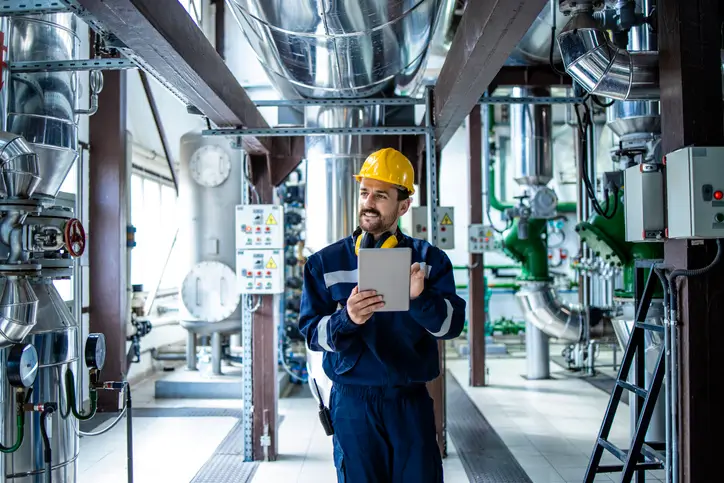Technology in EHS: Improving Workplace Safety and Efficiency
In 2022, nearly 5,500 workers died on the job, according to the Bureau of Labor Statistics. Almost 3 million nonfatal workplace injuries and illnesses were reported in private industry. Environmental Health and Safety (EHS) ensures compliance and risk management in the workplace environment. These practices have started to be incorporated in organizations to comply with systems and have gradually manned over the years. This change has been a result of a pressure to find solutions to intricate problems such as workplace safety, environmental care, and health management. So one could state today’s technology is bringing a positive impact to developing the EHS standards, it makes it possible for businesses to further safeguard its human capital, increase its compliance with environmental laws and minimize the consequences of its operations while remaining within the legal framework.
The Evolution of EHS Technology
Historically, EHS management relied on manual processes, making it hard to manage compliance issues, deal with safety incidents, and even monitor safety. Luckily, technological advancement has saved the day, from cloud-based systems to IoTs, organizations have evolved and made EHS pragmatic.
Recent progress in technology has accelerated the rise of regulation technology for risk and compliance management. It provides real-time updates on legal obligations by understanding complex regulations, integrating applications for reporting of incidents, inspections, and audits, ensuring data management and accuracy.
Key Technologies in EHS
IoT and Wearable Devices
The Internet of Things (IoT) has revolutionized EHS by enabling real-time monitoring of the workplace environment. Sensors can detect hazards and malfunctions, triggering immediate alerts to prevent accidents. Wearable devices, such as smart helmets, and wristbands, can help in tracking worker’s vital signs and movement, ensuring their well-being in high-risk environments.
IoT-enabled devices can monitor certain environmental elements like air quality, and provide data to help managers in making informed decisions for safety from exposure to harmful substances. This approach fosters a safe workplace and ensures risk mitigation.
AI and Predictive Analytics
It is shocking to realize that Artificial Intelligence (AI) and predictive analytics have already been integrated into the EHS sphere. AI-powered algorithms efficiently analyze historical data and provide possible risks and prevention strategies. This is useful in construction and mining because of high-risk probability in such environments. AI-powered tools also help in trend spotting and linking them to the history of incident reports, making data management and reporting easier and accurate.
Drones and Robotics
Manual inspection of facilities like wind turbines, or pipelines is difficult and dangerous for workers. This problem is solved by drone technology, allowing safer inspections and consistent monitoring. On the contrary, Robotics can undertake the handling of hazardous items or work in extreme temperatures without the need for human intervention and exposure. Tasks that would take days and multiple resources can be shrinked into hours, helping organizations in minimal resource allocation.
Cloud-Based EHS Software
EHS management is made easier with cloud-based solutions as the mainstay. It provides a centralized platform for data management, ensuring accessibility for stakeholders to streamline processes and improve decision-making with the help of real-time dashboards, automated workflows, and integrated reports. The scalability of cloud-based systems ensures that they can grow with the organization, providing long-term value.
Advantages of Technology in EHS Practices
EHS practices that integrate the use of technology have enormous benefits:
Improved Compliance:
Automated systems ensure all regulatory requirements are met through the organization, thereby eradicating the risk that comes with fines and possibly legal issues.
Enhanced Safety:
Real-time monitoring using predictive analytics identifies and rectifies risks before they get to the point of converting into incidents.
Operational Efficiency:
Streamlined procedures and centralized data reduce administrative burdens and improve efficiency.
Informed Decision-Making:
Informed decision-making enables managers to proactively decide on safety and sustainability using data-driven insights.
Challenges and Considerations
Contrarily, there are multiple negative factors related to adopting the technology for EHS. Most of the organizations are highly concerned about the initial implementation cost, employee training and data security risk. Careful planning and execution is required for integrating new technologies with traditional systems.
Similarly, organizations should not let EHS be one of those practices where technology takes away human interactions. Though tools and equipment provide great data, the analytical input derived from this information depends wholly on human judgment and professional experience.
Future Trends in EHS Technology
The future with EHS technology is pretty bright and a continuous development, including:
- Augmented Reality (AR): The potential of AR tools is immense for immersive training in safety protocol practices.
- Blockchain: Blockchain technology can help to ensure transparency in compliance reporting and consistency in data, ensuring that it is reliable and cannot be tampered.
- Sustainability Metrics: Advanced analytics can help organizations to track and report on their environmental impact, while maintaining alignment with global sustainability goals.
Conclusion
Technology has become an essential element in the enhancement of EHS practices. The possibilities are vast and transformative, from IoT devices, and AI-powered tools, to cloud-based platforms, and drones. With these technologies, organizations are creating safer workplaces, meeting regulatory compliance requirements, and driving toward a more sustainable future.
In the rapidly changing EHS landscape, staying ahead of technological advancements will be crucial for effective competition. This proactive approach will safeguard the well-being of both employees and the environment. The path to becoming smarter, safer, and more sustainable starts with embracing innovative technology.




